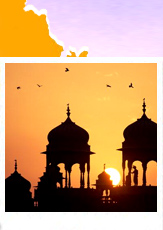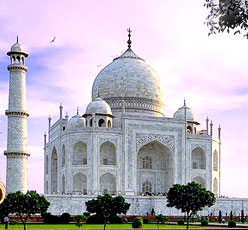 The literal meaning of 'Gokarna' is 'the ear of the
cow' and is so named because of the ear-shaped confluence of two rivers.
However, according to the popular belief, it is named so to commemorate
Lord Shiva's emergence from the ears of a cow. It is an important Hindu
pilgrimage centre and also a famous Sanskrit-learning centre. 200 km
from Mangalore, the place has been mentioned in Gokarnam Purana, where
it is said that mere visit to the place liberates one from hundreds of
sins including the deadliest ones such as 'brahma-hatya' (the killing of
a Brahmin or a pious person). It also mentions that even a glimpse of
the Atma-linga, one of the popular shrines of the city, helps one to
attain salvation and frees one from the cycle of births and rebirths.
The literal meaning of 'Gokarna' is 'the ear of the
cow' and is so named because of the ear-shaped confluence of two rivers.
However, according to the popular belief, it is named so to commemorate
Lord Shiva's emergence from the ears of a cow. It is an important Hindu
pilgrimage centre and also a famous Sanskrit-learning centre. 200 km
from Mangalore, the place has been mentioned in Gokarnam Purana, where
it is said that mere visit to the place liberates one from hundreds of
sins including the deadliest ones such as 'brahma-hatya' (the killing of
a Brahmin or a pious person). It also mentions that even a glimpse of
the Atma-linga, one of the popular shrines of the city, helps one to
attain salvation and frees one from the cycle of births and rebirths.The popular solitary beaches here are Kudle beach with a beautiful white sand beach surrounded by palm trees about a kilometer long, Om beach, which is so-named because of its shape like the auspicious Om sign and Half-moon and Paradise beaches where one can enjoy the moonlight on the soft sands by the seaside. However, the star of all the sacred and tourism sites of the region is the Mahaballeswara Temple dedicated to Lord Shiva or Rudra, often referred to as the Kashi of the South. According to a legend, Lord Rudra went to Patalaloka for penance on the advice of Lord Brahma and returned through the ear of Mother Earth, often symbolized as a cow. Since the place served as the womb for him, it is also known as Rudra Yoni or Adi Gokarna. It holds a special religious significance and is one of the three 'Siddhi Kshetras', the other two being Pushkar and Shaligram.









